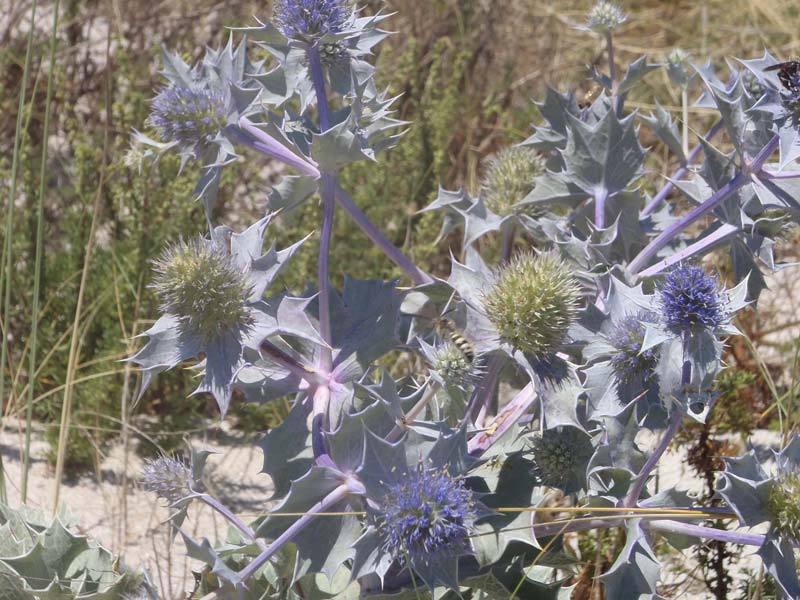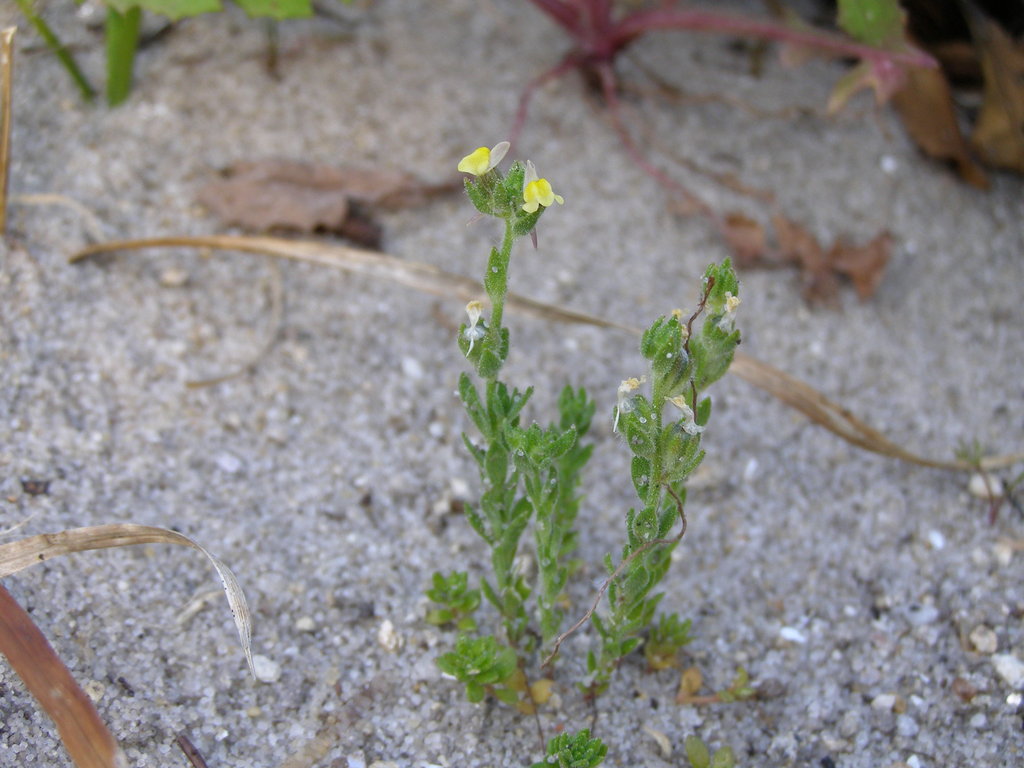In the first strip there is beach vegetation where sea species are affected by tides: European searocket, the sea sandwort and poligonum maritimum.
The first group of dunes is the one situated closest to the coast. This area is exposed to sea action, in contact with the waves. The elytrigia juncea has long strong roots which allows it to attach to the substrate counterbalancing the action of waves and wind. It could gather some sand around it. Other species as the Sea holly and the shore bindweed.
The second group of dunes forms the second plant strip. Mobile though more stable. They will attach a great deal of the substrate using it as sand supplies. This contributes to beach balance.
Constant moving system because of the sea and wind which erode and also allow their appearance. There are species: the European beachgrass, Otanthus (from the daisy family), the shore bindweed, the sea spurge, sea daffodil, the spiny thrift - herba de namorar and the camariña in Muxieiro.
The next stripe is the furthest from the sea. It´s the third dune system, where both salinity and wind are weaker and for this reason there are more plant species like the curry plant, artemisia crithmifolia ó campestris, camariña and spiny thrift.
In the clears of the second and third groups of dunes some plants grow: the sand viola and “paxariños amarelos” (little yellow birds)
In Ons, the toadflax appears but only in the archipelagos of Ons and Sálvora. Endangered species.


